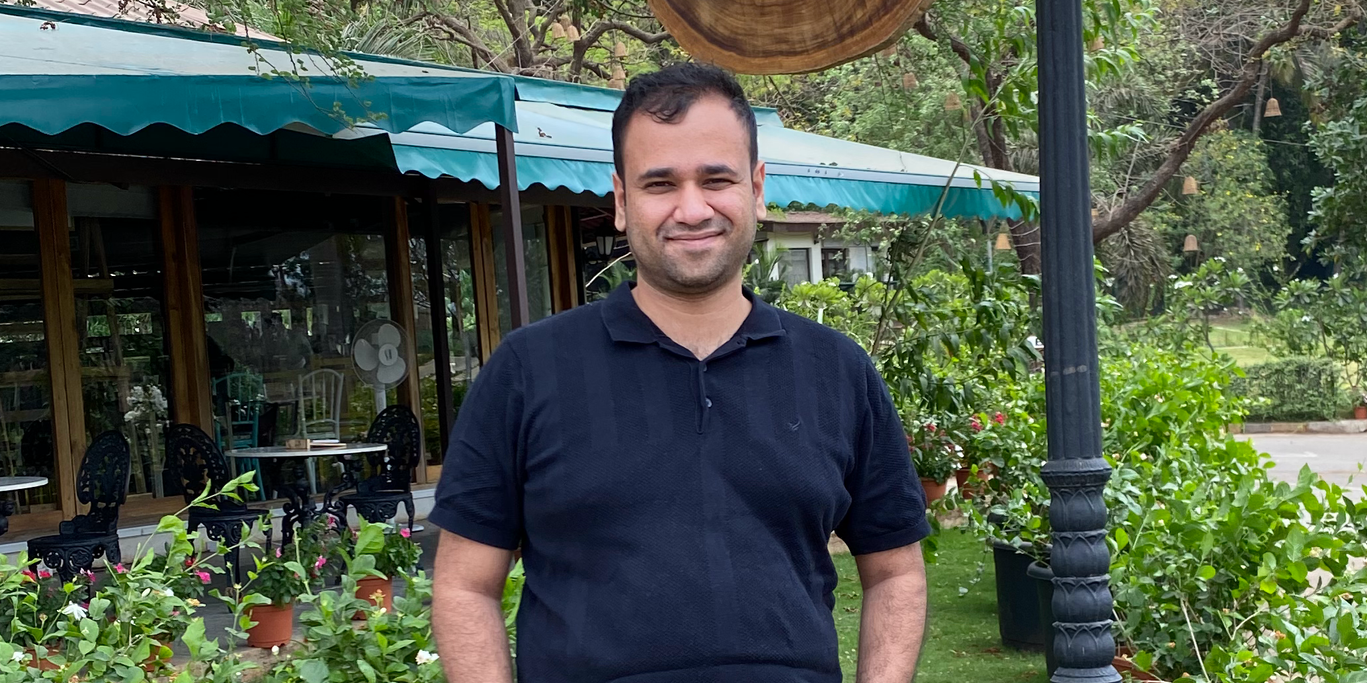[Case Study] Global Delight - From small town India to 35 million downloads
Who hasn’t heard of the popular Udupi restaurants? Every region across the world with a sizeable Indian population is sure to have an Udupi hotel that serves the scrumptuous traditional South Indian fare that this small town is famous for. Udupi is a picturesque small coastal town nestled in the south-western part of India and it was built with a Lord Krishna temple as its hub. But would you believe it if someone told you that this place has an organization comprising 400+ Mac/iOS developers? Would it seem even more far-fetched if that same someone told you that this firm created an app that rose to the top of the app rankings in the photo category?
Well, both these statements are true. The software firm in question is Robosoft and its subsidiary, Global Delight, is the product company that created this killer app. Welcome to the fabulous behind-the-scenes story of their journey to App Store stardom.

A. Founding DNA
Robosoft and Global Delight carry the DNA brought about by their founder, Mr. Rohith Bhat. Rohith was a student who belonged to the third batch of Nitte Engineering College (NMAM Institute of Technology). It was a four year engineering course filled with constant struggle, given that the institute was relatively new and lacked all the necessary equipment and infrastructure. Getting past these obstacles, he managed to obtain his engineering degree with flying colors in 1992 and went on to Mumbai (then Bombay) in search of a job. He landed his first gig with a little-known software company at SEEPZ Andheri East, which has a large concentration of IT firms.
The succeeding year, in 1993, Rohith got an opportunity to work for a company in Japan. One of Steve Jobs’ famous quotes was “Connecting the dots”; referring to the various things that happen in our lives and how it all ends up being beautifully connected in the grand scheme of things, but only should we choose to see them. Unknown to Rohith, this trip was one of those dots that would later have a huge impact in his life. During his two-and-a-half year stay in the company, one of the main projects Rohith worked on was a Word Processor for the Mac in Japanese. During that period, he went from being a developer ignorant of the Mac to falling madly in love with it.
There is one more that influenced Rohith during his stay in Japan. His initial days, during which he experienced a culture shock, made him appreciate the culture and have a deep sense of respect for the Japanese way of life. Their hard working nature, courteousness and humility left a mark on him. His travels across Japan created a sense of awe, for the nation had risen from the ashes after World War II. The thought of starting his own company and creating a value proposition rooted in ethics fascinated him and this seeded deep inside during that period. He left his job around late 1995 and decided to start up.
B. The birth of Robosoft
Circa 1996, Apple Inc. entered the Indian market to sell its products to the consumers. Globally, Apple was not doing very well, with its products having failed and the enigmatic Steve Jobs getting fired from the very firm he co-founded. But for Rohith, none of that mattered as he was proud to be part of an exclusive club that loved the Mac. Robosoft was born with a simple vision – to develop apps for the Mac platform.
Rohith got in touch with the Apple team in India and became closely involved with their work. In fact, he was the only technical person in the group that went with the them on roadshows, evangelizing their products across the country. The very first project of Robosoft involved building tools to go with the Indian language kit for Macs, bringing support for Hindi, Punjabi and Gujarati. His effort in developing Japanese word processors ended up paying rich dividends.
Other projects started rolling in slowly. One such project was for a US startup, becoming the first US client other than Apple. The relationship grew in terms of value and trust, so much so that even after a year of engagement, Robosoft never met the client in person eventhough the payments were duly being made on time. This gave the confidence to Rohith that with the internet, one can live in any part of the world and do this kind of business. So why shouldn’t he open up shop in his own hometown of Udupi!?
Robosoft had started to take shape and the focus slowly shifted towards maturing in this industry. Rohith struck a deal with National Institute of Technology (NIT) Karnataka (then Karnataka Regional Engineering College,) located at Surathkal, to take Robosoft to the next level by leveraging their Science and Technology Entrepreneurship Program (STEP). This engagement would later bring in another key person to the team – M. Ramachandra Acharya (“Ram”), who was a batchmate of Rohith’s during Engineering and was teaching at the facility then. The idea was to use KREC students and others from the neighbouring Engineering colleges to build customer-centric projects by leveraging the STEP infrastructure. It started off with a couple of interns and engineers and quickly grew into about 19 engineers as projects started coming in. In short, the firm had to move out of the STEP’s facility and find their own office space.
For the next six years Robosoft grew steadily, successfully delivering projects to various clients including Apple and HP. But Rohith still felt there was something missing. He had always wanted to build his own product. Now that Robosoft was growing, he surmised that this would be a good time for his next big challenge!
C. Delighting with Global Delight
The as yet unnamed subsidiary’s incubation started by putting together a crack team of experts from different backgrounds. The team comprised of six engineers, one marketing professional and developer each and two interns. The team was hand-picked by Rohith and each had a story behind them. For instance, Guruprasad Kamath (“Guru”) from Marketing had an email sent to Rohith enquiring as to why some of the internal tools were not being packaged and sold to the outside world. Rahul Shetty, who had been coerced straight out of the Computer Science batch at Manipal Institute of Technology, had floated the idea of a product company to Rohith around the same time. The goal for this team was not revenue, but building something they could call their own.
While the freedom to create sounded exhilarating, the million-dollar question was finding out what would capture the imagination of people. The team explored various options based on what was trending at the time. Web 2.0, multimedia and smartphones were growing rapidly; YouTube was becoming quite the sensation. The team finally arrived at a question that was novel at the time – “How do we best bring out the Web experience onto the desktop?”
The product, which was christened ‘Web2 Delight’, was based on the idea of curating user content from YouTube, Vimeo, BlipTV, DailyMotion, Flickr, Photobucket and Picasa and presenting it to the user on the desktop. A user could search, view and download content from these sites in a jiffy. Programmed using the accompanying APIs, it was developed and later sold for $19.99 a pop. MacWorld and ArsTechnica covered this utility tool and it started gaining traction. However, this success was short lived – the source websites were constantly changing their rules to ensure traffic remained on their site and hence put a stop to the content downloading APIs in 2009; effectively ending Web2 Delight’s operations.
Interestingly, the new team did not have an official name until 2008 – they were operating with a single web page dedicated to the Web2 Delight product. With it gaining traction, the team had to brainstorm and come up with an apt name. After much debate, Rohith finally suggested ‘Global Delight’ due to the vision of “delighting customers globally”. Global Delight was incorporated as a fully owned subsidiary of Robosoft in February 2008.
While Web2 Delight faded away gradually, the team never stopped looking for more fresh and innovative ideas. This was around the same time Apple was running the famous ‘Mac vs. PC’ commercials and curiously, the team observed that the Mac lacked a full-fledged screen capture tool. Yes, the ‘Command + Shift + 3’ was present, but users needed much more for the feature to be relevant. That was the genesis of ‘Voila’, which was later launched at the MacWorld Expo in San Francisco. The first version arrived in January 2009 and the utility was predominantly delivered to the end user through a bundling strategy. This, based on a deep understanding of consumer habits, turned out to be very effective. Voila screen capture for Mac completed its fifth anniversary in January 2014 and remains one of the best productivity tools; used regularly by 6 of the top 10 universities, top production houses (NBC Universal etc.), IBM employees, Facebook, Ford and so on.
D. The ‘PLUS’-sized Idea
After the moderate success of Web2 Delight and Voila, the team turned its attention to the Apple App Store, which was launched in June 2008. Numerous pilot projects were executed but none had huge potential or the ability to attract the team’s attention. There was ‘WordDigest’, a dictionary and thesaurus application that worked well but there was nothing going on to differentiate it. Then came ‘Charm’, a mathematical magic application, which was again received with a lukewarm response. Later, a series of quiz applications came and went quickly.
The team did not want to continue doing this. Their vision was fixed firmly on one goal – to put their stamp on the global app map by creating something worthy of a Million+ downloads.
All these pilot projects, while seemingly not hot, were slowly adding wisdom and experience into the team. That was the time when Ram entered into the scene. This was also around the time when a completely different product took shape and brought a new idea right to their doorstep.
Steve Jobs unveiled the much anticipated iPhone 3GS, successor to the iPhone 3G, in June 2009. It was one of those momentous occasions and it had a big impact. While the phone was feature packed and a pioneer in itself, the camera that came with the model was quite poor – it lacked zoom or an LED flash while the iPhone 3G lacked video recording. So the team decided to leveraged their experience from previous projects and came up with ‘Camera PLUS’, filling in with features missing from the original camera. It was an ‘also ran’ project within Global Delight and the team did not expect much out of it. The product ended up having live photo zoom, video recording and Soft Flash as its features, many of which were built using the limited technology frameworks of iOS. The team also used Open GL and other core image processing techniques while the hardware took care of the rest.
E. The Unexpected Jackpot
After the first two weeks of its launch, the number of downloads of Camera PLUS steadily started to increase. By October 2009, the app had surpassed everybody’s expectations and clocked about 2 Million+ downloads. The team finally tasted App Store success after several elusive attemps and missteps!
Camera Plus Pro was later launched as a paid app in December 2009 with souped-up features, after incorporating a lot of user feedback.
The next big break came in the form of Philip Michaels, who had been covering the entire Mac ecosystem since 1999 and is also the editor of TechHive (then Macworld). Philip bumped into the team on the sidelines of the MacWorld Expo and asked them if they would like chime in for five minutes. It was just one question – “What’s your story?”
As luck would have it, Rahul and Guru had travelled to San Francisco from India the day before and in an attempt to adjust their biological clock, they shot a few videos through the aircraft’s window while flying. Instead of explaining everything to Philip, they showed him the video. Philip viewed it and remarked “What’s so special?”. The team turned the device around and it was an iPhone 3G! He must have been surprised at the quality of the videos too, given the device it had been shot on. He immediately took the team to the Press Area and the much-coveted 15 minute slot was theirs; they started to talk about Camera Plus and Camera Plus Pro. No one had any idea if they liked their story or not and having done all that they could, turned in for the night.
The next day, Camera Plus Pro 2.0 was featured on MacWorld’s website. The avalanche had just begun and soon Gizmodo’s coverage followed. Then came an email from Bob Tedeschi of The New York Times, resulting in even more invaluable coverage.
The team fondly refers to this journey as ‘Santhekatte to New York Times’. Santhekatte is the area where Global Delight’s office is located in Udupi. In addition to the coverage by NYT, this incredible journey of the company has also been chronicled in Huffington Post.
F. Other Successes
Camera Plus and Camera Plus Pro for the iPhone and Voila for the Mac have been massive success stories and are well known across the globe. But Global Delight has quietly built other products too and these are driven by only one goal – to build products that have the potential to someday become successful and well-loved.
‘Game Your Video’ is a highly regarded video creation, editing and sharing app with features like live motion effects, audio transformations and video filters. Blessed with an easy to use and intuitive interface, this puts a powerful video tool into the hands of everyone. Game Your Video won the ‘Macworld Best of Show 2012’ and ‘App Store Best of 2012’ awards in style!
‘Photo Delight’ is an app created specifically for the iPad and it provides for excellent color splashes on photos. The ‘smart mode’ feature is intuitive enough to provide splashes without having to manually manage the zooming and erasing of edges. This has also won acclaim from leading app reviewers across the world.
‘Boom’ for Mac provides a system-wide volume booster and equalizer spanning several presets. It also boosts the volume of music and video files from the iTunes library or hard drives, while also being able to enjoy this boosted experience on the iPhone, iPod Touch and iPad, via a seamless transfer. Boom was chosen as the ‘Macworld Best of Show 2011’.
G. The Next Big Challenge
February 2014 marked the 6th anniversary of Global Delight. Today, four members including Rahul and Guru work tirelessly in Global Delight. The team has grown to nearly 35 members comprising a cross section of skills – designing, engineering, marketing, quality assurance, and support.
The team has achieved 35 million downloads across all apps. Camera Plus remains in the limelight with a base of 22 million downloads. Nearly 50% of their users are from the US while the rest are split between Europe and other countries. To top it all off, Camera Plus was recently released with some game-changing features like ‘AirSnap’ – A remote capture feature that allows for triggered photography between 2 iOS devices and Universal compatibility, which brings the same beautiful interface to the iPad. It was an instant hit and was featured by Apple as well as covered extensively by the media. Going forward, Global Delight is looking for ways to leverage this feature and extend its functionality is a myriad of ways and with better features that will ultimately improve the overall user experience.
The team continues to innovate and build products for the Mac and mobile devices. They continue to do so not just in the field of technology but also on business models and such. They know that the competitive landscape has been democratized with the coming of age of the App Store – it’s easy to contemplate that the next big thing could come out from a garage in a small town present anywhere in the world! Hence the constant focus on innovation and getting better at what they do.
The team that was creative enough to connect the dots and use one of ancient mathematician Bhaskaracharya’s Sutras in their app will surely continue to excel at what they do!
Global Delight case study powered by YourStory






![[Case Study] Global Delight - From small town India to 35 million downloads](https://images.yourstory.com/cs/wordpress/2014/04/13.-GlobalDelight-Featured2.png?mode=crop&crop=faces&ar=2:1?width=3840&q=75)




